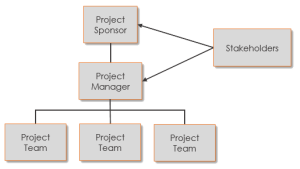
Engineers are not normally taught the principles of project management, although it is a critical function in their careers. Most engineers see themselves as technical experts, not project managers, but business is business and every engineer I know of seems to find themselves face to face with the realities of timelines, budgets, and people management on a regular basis.
Project management is a multi-faceted discipline that contains many individual specialties within it. Indeed, entire degree programs are devoted to the topic. Some people consider their career to be a project manager rather than technical expert, particularly on larger projects.
Project Management Organizations
The Project Management Institute (PMI), for example, has more than 600,000 members and offers multiple accreditations such as Project Management Professional (PMP) and Certified Associate in Project Management (CAPM), the entry level certification that requires no project management experience. For those in charge of “programs” (collections of projects), there’s the Program Management Professional (PgMP). There are also various sub-categories such as Risk Management Professional (PMI-RMP) and Scheduling Professional (PMI-SP). These accreditations involve several months of part time study and passing an exam. The PMI’s textbook on project management is called the Project Management Body of Knowledge (PMBOK), available at most bookstores or Amazon.
The International Project Management Association (IPMA) also issues a certification for project managers. The four levels, from A to D, correspond to varying levels of expertise. Level D is an entry level designation similar to PMI’s CAPM. Levels B and C correspond to senior and mid level project management. Level A is a program management designation similar to PMI’s PgMP. Each country has an IPMA member organization that deals with the certification in that country, and they have quite a bit of freedom to alter the specifications for the certification so the interested candidate must be certain to find that member organization. The IPMA’s textbook is called the IPMA Competence Baseline (ICB).
In addition, there is a certification called PRINCE2, issued by a quasi-governmental organization in the UK called Axelos. PRINCE2 is considered the easiest way to get certified because there is no experience, no resume to submit, and no courses to take (although it might be easiest if you do). All you have to do is write the exam. The textbook is called Managing Successful Projects with PRINCE2.
The Project Management Body of Knowledge
The most popular guide to project management is PMI’s Project Management Body of Knowledge (PMBOK). It divides a project into five chronological (generally speaking) process groups, which can be thought of as phases. For small projects these will be performed in order, but for larger or more complicated projects you often have to, for example, jump back and perform some more planning.
- Initiating. Authorizing the project and establishing funding.
- Planning. Developing the project schedule, budget, and project management plan.
- Executing. Performing the project work.
- Monitoring & Controlling. Ensuring the project stays on track to meet the schedule, budget, and any other item contained within the project management plan.
- Closing. Developing as-built plans, closing contracts, etc.
PMI suggests that a the planning phase is significantly underrated on most projects. As a guide, they suggest that 30% of a project should be spent in the first two process groups. Although this includes planning during the project (reviewing schedules and resources, performing risk analyses, etc.) most people would agree that most projects don’t receive this kind of planning effort.
The project management plan developed during the planning phase contains the schedule, budget, and any other item that defines the “plan” for the project. It should be approved by the project sponsor, and any changes during the project’s execution phase should be documented in a change log and re-approved.
Throughout these phases the project manager employs ten knowledge areas. The actions within each knowledge area are employed at any time but there are generally times at which each is useful:
- Integration management. The bigger picture stuff that doesn’t fit into specific knowledge areas, like writing the project management plan, dealing with project changes, etc.
- Scope management. Defining the project scope and ensuring it doesn’t change except when specifically planned for (scope creep).
- Time management. Developing the project schedule and ensuring the project stays on schedule.
- Cost management. Estimating the project’s cost and ensuring the project stays under budget.
- Quality management. Determining what the quality standards for the project are, and how the project will meet those standards.
- Human resource management. Defining the job responsibilities of the project team, acquiring the personnel and and giving them the tools to succeed.
- Communications management. Establishing the communications needs of the project.
- Risk management. Determining the biggest risks to the successful completion of the project, how they will be mitigated, controlled, or transferred, and developing written response plans where necessary.
- Procurement management. Itemizing the external vendors required to complete the project and determining how they will be managed.
- Stakeholder management. Defining the project’s stakeholders and analyzing their needs.
Unlike other types of projects, engineering projects have a tendency to need a broad range of these rather than specialize in one or two.
Project Organizational Chart
The generic project organizational chart is as follows:
 Project Sponsor. This is the person that accepts the project’s deliverables. Whether inside or outside the organization, they also authorize the project and approve project funding. They are one level above the project manager.
Project Sponsor. This is the person that accepts the project’s deliverables. Whether inside or outside the organization, they also authorize the project and approve project funding. They are one level above the project manager.- Project Manager. The person who manages the day to day project activities and on whom responsibility for the project’s success or failure rests.
- Project Team. The people who perform the technical project work, on time, on budget, and to the specifications developed within the project management plan.
- Stakeholders. Anyone who has an interest in the project. From government regulatory bodies to adjacent landowners to funding agencies, they can all derail the project and need to be managed.
Project Management Software
Project management software tends to be specific to the discipline, for example, Primavera P6 for civil contractors. But in the absence of specific software in your industry, Microsoft Project tends to be widely used. It has pretty good scheduling, time and scope management.






